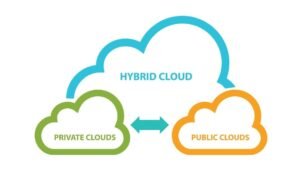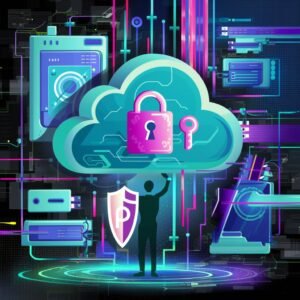C# For Kids
Unlock the magic of coding with ‘Coding Adventures: A Kid’s Guide to Programming with C#’! Packed with fun activities and hands-on projects, this engaging ebook introduces young readers to the exciting world of computer programming using the C# language. From basic concepts to building interactive games, it’s the perfect guide for budding young coders ready…
Edge computing is a transformative technology that is redefining how data is processed, managed, and delivered from millions of devices worldwide. By moving computation and data storage closer to the location where it is needed, edge computing addresses the limitations of traditional cloud computing, offering faster data processing and reduced latency. This article explores the fundamentals of edge computing, its benefits, and real-world applications, along with practical examples to illustrate its potential.
What is Edge Computing?
Edge computing is a distributed computing paradigm that brings computation and data storage closer to the sources of data. Instead of sending data to a centralized cloud for processing, edge computing processes data locally on edge devices such as IoT devices, sensors, and local servers. This approach reduces the latency and bandwidth use that typically accompany cloud computing.
Benefits of Edge Computing
- Reduced Latency: Processing data closer to its source significantly decreases the time required for data to travel back and forth, resulting in faster response times.
- Bandwidth Efficiency: By processing data locally, edge computing reduces the amount of data sent to the cloud, saving bandwidth and reducing costs.
- Enhanced Security: Local data processing minimizes the risk of data interception during transmission and enables better data privacy and security controls.
- Reliability: Local processing can continue to operate even if the connection to the cloud is lost, improving system reliability and availability.
Key Concepts
Edge Devices
Edge devices are the hardware components used to process data locally. These include IoT devices, sensors, gateways, and edge servers.
Edge Analytics
Edge analytics involves analyzing data at the edge of the network, enabling real-time decision-making and immediate insights without the need for cloud processing.
Fog Computing
Fog computing is an extension of edge computing that involves a network of edge devices working together to distribute computing tasks. It provides a more scalable and flexible approach to edge computing by creating a continuum from the edge to the cloud.
Real-World Applications of Edge Computing
1. Industrial IoT
In industrial settings, edge computing is used for real-time monitoring and predictive maintenance. For example, sensors on machinery can collect data on performance metrics and process it locally to detect anomalies or predict failures before they occur.
Example: Predictive Maintenance in Manufacturing
# Sample Python code for processing sensor data on an edge device
import random
def read_sensor_data():
# Simulate reading data from a sensor
temperature = random.uniform(20.0, 100.0)
vibration = random.uniform(0.0, 5.0)
return temperature, vibration
def process_data(temperature, vibration):
if temperature > 80.0 or vibration > 3.0:
return "Maintenance Required"
else:
return "Normal Operation"
# Simulate edge device processing
temperature, vibration = read_sensor_data()
status = process_data(temperature, vibration)
print(f"Machine Status: {status}")
2. Autonomous Vehicles
Edge computing is critical for autonomous vehicles, which require real-time processing of vast amounts of data from sensors and cameras to make driving decisions.
Example: Real-Time Object Detection
# Sample Python code for real-time object detection using OpenCV
import cv2
# Load pre-trained object detection model
net = cv2.dnn.readNet('ssd_mobilenet_v3_large_coco_2020_01_14.pbtxt', 'frozen_inference_graph.pb')
# Function to perform object detection
def detect_objects(frame):
blob = cv2.dnn.blobFromImage(frame, 0.007843, (300, 300), 127.5)
net.setInput(blob)
detections = net.forward()
return detections
# Simulate edge device processing
cap = cv2.VideoCapture(0)
while cap.isOpened():
ret, frame = cap.read()
if not ret:
break
detections = detect_objects(frame)
for i in range(detections.shape[2]):
confidence = detections[0, 0, i, 2]
if confidence > 0.5:
# Draw bounding box around detected object
box = detections[0, 0, i, 3:7] * np.array([frame.shape[1], frame.shape[0], frame.shape[1], frame.shape[0]])
(startX, startY, endX, endY) = box.astype("int")
cv2.rectangle(frame, (startX, startY), (endX, endY), (0, 255, 0), 2)
cv2.imshow('Frame', frame)
if cv2.waitKey(1) & 0xFF == ord('q'):
break
cap.release()
cv2.destroyAllWindows()
3. Smart Cities
Edge computing enables smart city applications such as traffic management, smart lighting, and waste management by processing data from distributed sensors in real time.
Example: Smart Traffic Management
# Sample Python code for smart traffic management
def optimize_traffic_lights(sensor_data):
# Simulate optimization logic based on sensor data
if sensor_data['traffic_density'] > 80:
return "Increase Green Light Duration"
else:
return "Normal Operation"
# Simulate edge device processing
sensor_data = {'traffic_density': 85}
action = optimize_traffic_lights(sensor_data)
print(f"Traffic Light Action: {action}")
Conclusion
Edge computing is a powerful paradigm that brings computation closer to the data source, offering numerous benefits including reduced latency, bandwidth efficiency, enhanced security, and improved reliability. By leveraging edge computing, businesses can achieve real-time data processing, faster decision-making, and greater scalability. As the Internet of Things (IoT) continues to expand, the importance of edge computing will only grow, driving innovation across various industries.
Embrace edge computing to enhance your DevOps practices, improve system performance, and unlock new possibilities for your applications.
#EdgeComputing #IoT #CloudComputing #LatencyReduction #BandwidthEfficiency #RealTimeProcessing #IndustrialIoT #AutonomousVehicles #SmartCities #FogComputing #EdgeAnalytics #TechInnovation #DataProcessing #FutureTech #DigitalTransformation






